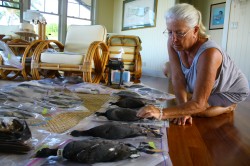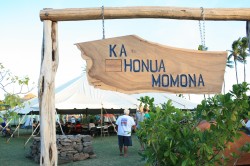A Return to Konohiki
Community-based proposal to manage Hawaii’s resources
Last month in Kalaupapa, the state-mandated Aha Moku Advisory Council presented a plan that could change the way natural resources are managed in Hawaii. The plan calls for a return to the konihiki system, in which those knowledgeable about the ways of the ocean set guidelines for marine food gathering using traditional Hawaiian methods.
“The Aha Moku is set up to look at evolving power back to the communities as far as resource management,” said Sen. Kalani English, who was among a handful of legislators who attended the Kalaupapa gathering. “How do we do that within state law… that’s what we’re figuring out.”…














